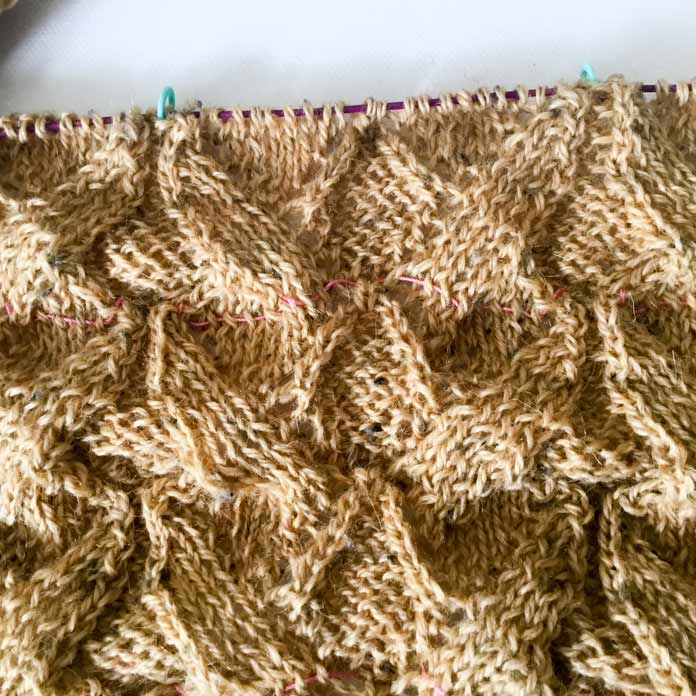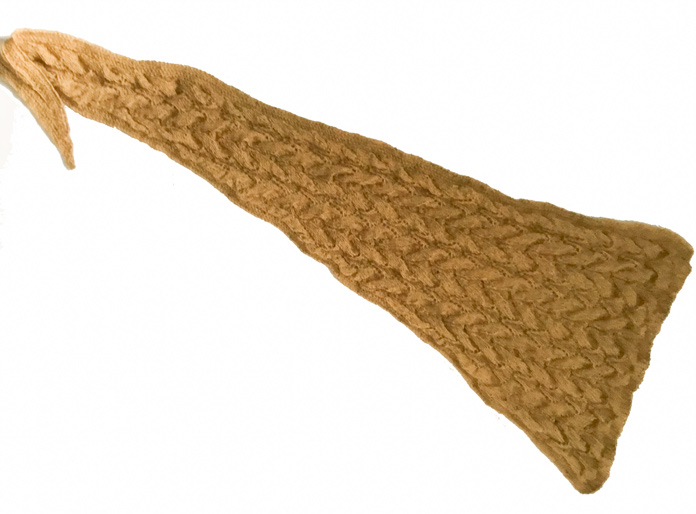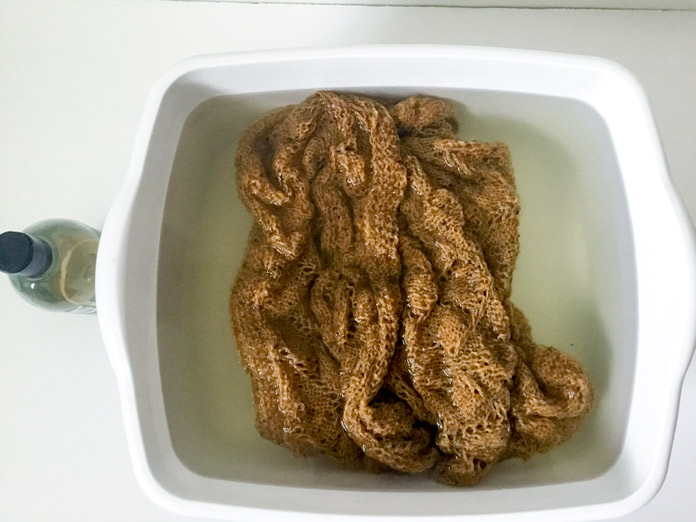Yesterday I talked about the progress on my lacey Arum Shawl project, worked with Fibra Natura Kingston Tweed – Ochre.
I also mentioned a lifeline. What is a lifeline in knitting lace?
A lifeline is a thread, preferably a smooth yarn like cotton or nylon, that’s threaded through all the stitches once you finish a pattern repeat or a section of a lacey pattern. This way, if you need to unravel your work when you make a mistake, you can go back to the lifeline. This avoids having to unknit every stitch. All stitches will be on the helper thread or lifeline, and you can put them back on the knitting needles and restart knitting.

Close-up of knitting showing a lifeline
I’m not able to memorize the lace pattern as it has knits, purls, decreases and yarnovers, so I have to follow the chart carefully up to the last rows.
The tip of the shawl has an additional chart for decreases when there are fewer stitches than half of the stitches in one lace panel repeat.
I finished the shawl using just under 3 skeins of the Kingston Tweed and am ready to look at my work.

Finished Arum Shawl knitted in Fibra Natura Kingston Tweed – Ochre
The knits and purls create a textured fabric that looks corrugated and hides the yarnovers. The lacey effect is not visible just yet.
To make my work shine, I must go to the last essential step of lace knitting: blocking!
I wrote “last step” but well, there are a few phases in this last step.
I immerse the shawl in a bowl with warm water mixed with a few drops of Soak detergent and let it soak for a few hours.

Soaking the finished Arum Shawl
Join me again tomorrow to learn the importance of blocking and to admire the finished and blocked shawl knitted with Fibra Natura Kingston Tweed yarn.
This is part 4 of 5 in this series
Go back to part 3: The Arum Shawl | Knitting a lace pattern
Go to part 5: Blocking a lacey shawl makes the shawl spectacular!
